7 Sources for Free Historical Flight Data You Can Access Today

7 Sources for Free Historical Flight Data You Can Access Today
Overview
The article identifies seven sources where users can access free historical flight data today. Among these platforms are the Initial Data Offering, OAG, and FlightAware, which provide extensive datasets. These datasets are crucial for analyzing trends, enhancing operational efficiency, and informing strategic decisions in the aviation industry.
Each platform offers unique features: for instance, the Initial Data Offering provides raw data that can be customized for specific analyses, while OAG delivers comprehensive schedules that are essential for understanding market dynamics. FlightAware, on the other hand, offers real-time tracking data, which is beneficial for operational adjustments.
The advantages of utilizing these datasets are significant. By leveraging historical flight data, aviation professionals can identify patterns that inform future strategies. This can lead to improved decision-making and operational efficiencies, ultimately benefiting the entire industry.
Consider how these datasets might apply to your work. For example, how could real-time tracking data from FlightAware enhance your operational strategies? By integrating these insights, you can drive more informed decisions within your organization.
In conclusion, accessing free historical flight data from these sources not only empowers aviation professionals with critical information but also fosters a deeper understanding of industry trends, paving the way for strategic advancements.
Introduction
The aviation industry is experiencing a data revolution, characterized by an unprecedented wealth of historical flight data now accessible to researchers, businesses, and enthusiasts. This article delves into seven invaluable sources that provide free historical flight data, highlighting their features, advantages, and the benefits they offer. By leveraging these resources, users can analyze trends, optimize operations, and enhance travel experiences.
However, as the volume of available data continues to grow, how can stakeholders effectively navigate these resources? What strategies can they employ to extract actionable insights and inform strategic decisions? These questions are crucial for maximizing the potential of the data revolution in aviation.
Initial Data Offering: Access Diverse Historical Flight Datasets
The Initial Data Offering (IDO) serves as a centralized hub for a wide range of free historical flight data, including schedules, performance metrics, and other aviation-related information. This platform streamlines the discovery process, significantly enhancing the accessibility of crucial information for businesses, researchers, and aviation enthusiasts alike. By offering free historical flight data, IDO empowers users to analyze trends in air travel and operational efficiency over time.
As of 2025, the volume of archival aviation datasets available across various platforms has exceeded 1 million, underscoring the industry's commitment to enhancing information accessibility. The benefits of utilizing a centralized aviation information hub are manifold. Users can tap into vast datasets to inform strategic decisions, optimize operations, and conduct thorough research. As Matt Davis, Chief Commercial Officer, aptly states, "There are significant advantages to having access to this information," emphasizing the critical role that historical aviation data plays in the decision-making process.
With the aviation sector becoming increasingly dependent on data-driven insights, the availability of free historical flight data on platforms like IDO is vital for fostering innovation and enhancing overall efficiency. This trend is further supported by advancements in technology, including the integration of APIs that facilitate seamless access to historical information, thereby simplifying the analytical process for users throughout the aviation industry. How might these datasets influence your strategic decisions or research initiatives?
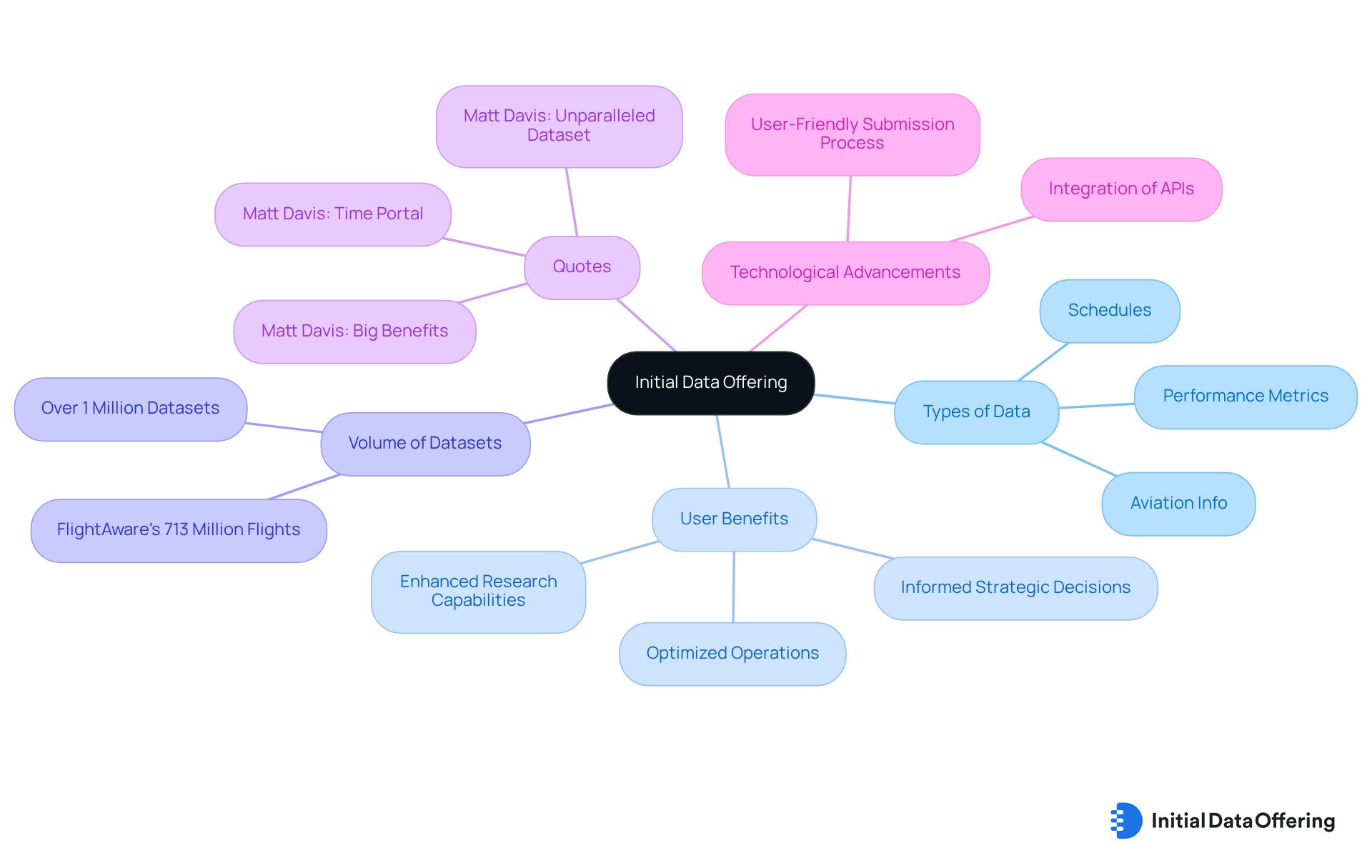
ExpertFlyer: Tools for Managing Flight Upgrades and Historical Data
ExpertFlyer provides a comprehensive suite of tools tailored for frequent travelers, enabling them to leverage historical travel data to improve their upgrade opportunities. Users can effectively track their travel history, manage award seat availability, and pinpoint the most favorable routes for upgrades. This functionality is crucial for maximizing travel benefits, as it empowers travelers to make informed decisions based on their past travel performance.
Industry experts emphasize the importance of utilizing historical data to manage travel upgrades efficiently. By examining trends in transportation availability and performance, travelers can refine their strategies for obtaining upgrades. The platform's robust data analytics capabilities allow users to assess their upgrade potential based on historical patterns, leading to more strategic journey planning.
As of 2025, ExpertFlyer commands a substantial market share within the travel management tools sector, underscoring its value to travelers aiming to enhance their flying experience. Nonetheless, recent issues with award availability and seat map functionality have raised concerns regarding the platform's reliability. To maximize travel advantages with ExpertFlyer, users are encouraged to actively monitor their journey history and utilize the platform's features, such as the Information API and the Analyser tool, to stay ahead of upgrade opportunities. This proactive approach not only increases the chances of securing upgrades but also enriches the overall travel experience.
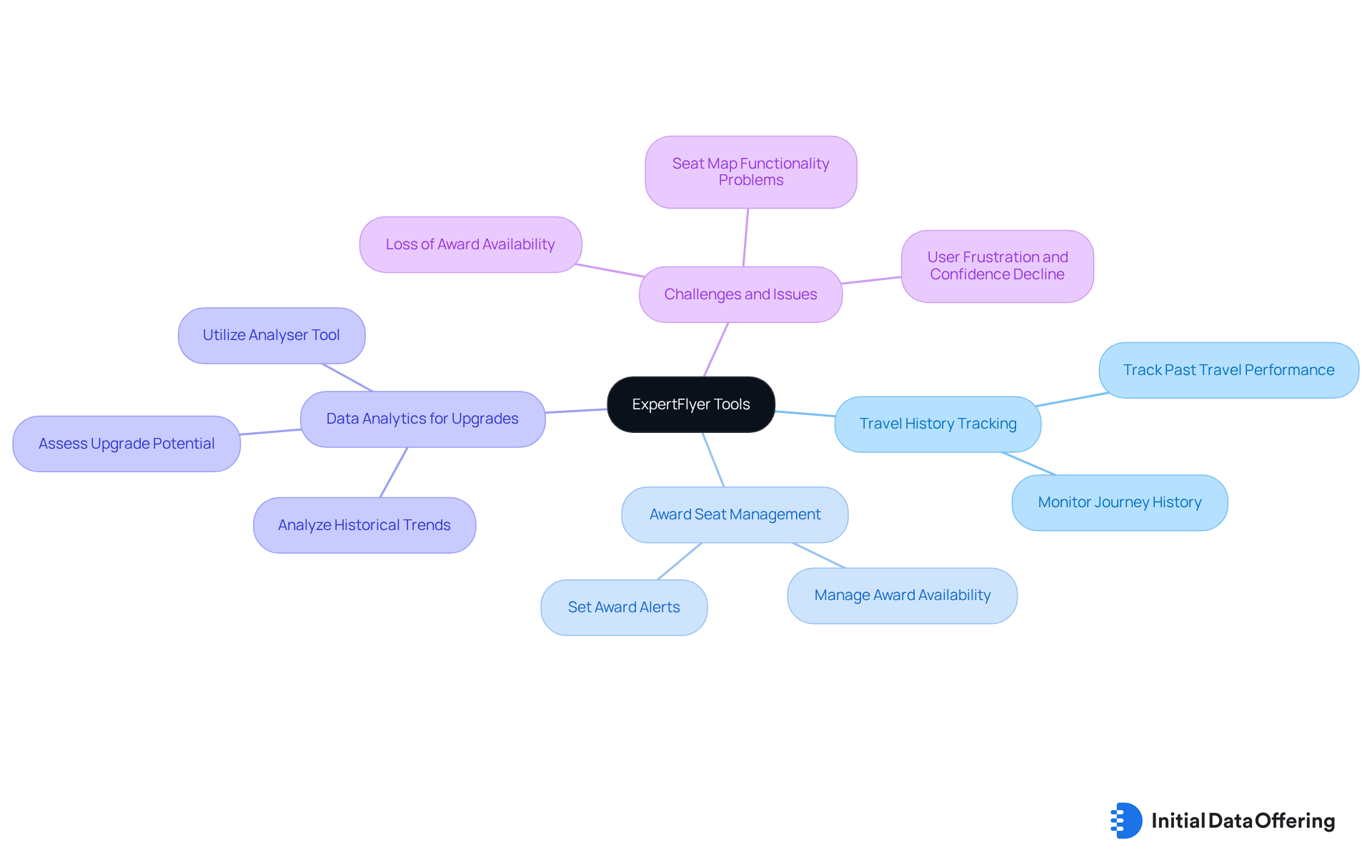
OAG: Comprehensive Historical Flight Schedules and Status Data
OAG provides a comprehensive collection of free historical flight data, which includes past flight schedules and status information, accessible since 2004. This extensive database that provides free historical flight data serves as a powerful tool for conducting in-depth analyses of airline, airport, and route performance. The advantage of utilizing OAG's information lies in its ability to uncover free historical flight data, which significantly influences strategic planning and decision-making processes.
How can businesses leverage this data to gain insights? Industry leaders assert that access to such extensive information is crucial for understanding market dynamics and optimizing operational strategies. For instance, airlines can evaluate performance metrics, identify growth opportunities, and adapt to shifting consumer preferences using OAG data. Companies that effectively harness this information can enhance their competitive edge, ensuring responsiveness to market changes and customer demands.
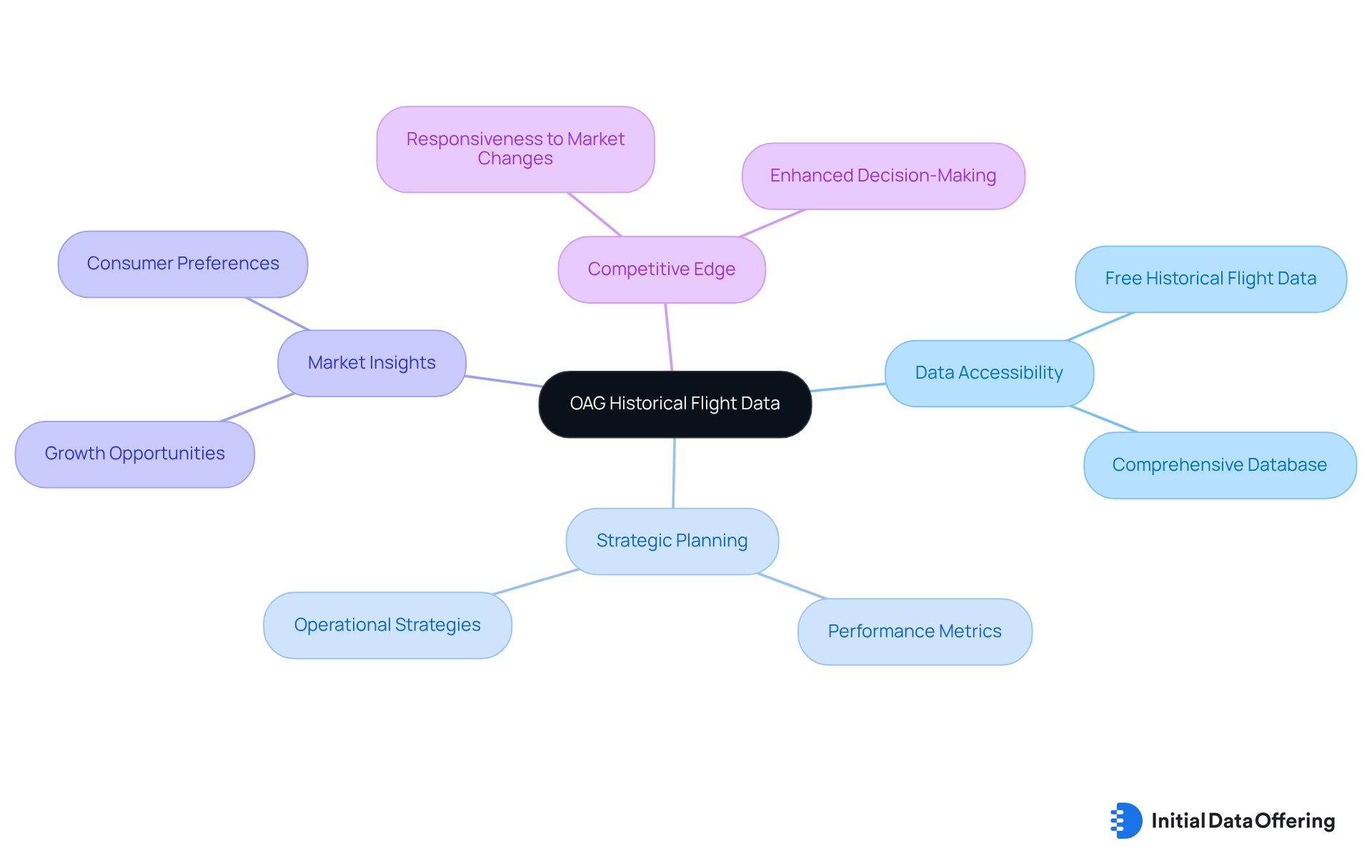
FlightAware: Real-Time Tracking and Historical Flight Insights
FlightAware provides real-time flight tracking and free historical flight data, empowering users to access comprehensive information regarding flight statuses, delays, and cancellations. This dual functionality enables users to analyze current trends while reflecting on past performance, establishing it as an invaluable resource for both aviation professionals and enthusiasts. By leveraging FlightAware's data, users can enhance their understanding of air traffic patterns and operational efficiency.
As Kathleen Bangs states, "Your destination for FlightAware news, announcements and resources," underscores the platform's dedication to delivering valuable insights. The integration of FlightAware's AeroAPI allows users to effortlessly access both current and historical data through a single RESTful API. This streamlines the development process for software developers and bolsters decision-making capabilities across various aviation applications. Such functionality is particularly advantageous for detecting trends and anomalies in air traffic, which can guide strategic planning and operational adjustments.
Looking ahead to 2025, real-time tracking trends suggest an increasing dependence on predictive analytics, with tools like FlightAware Foresight improving the accuracy of estimated times of arrival and taxi durations. Analysts emphasize that understanding these trends is crucial for enhancing operational efficiency and increasing customer satisfaction. Real-world examples demonstrate how free historical flight data can be utilized for trend analysis, enabling organizations to make data-driven decisions that improve efficiency and lower operational costs. Furthermore, with the launch of FlightAware Global Silver, a more affordable subscription option, users can access these essential insights at a reduced price. By fostering a deeper understanding of both real-time and historical information, FlightAware positions itself as a vital asset for those navigating the complexities of the aviation industry.
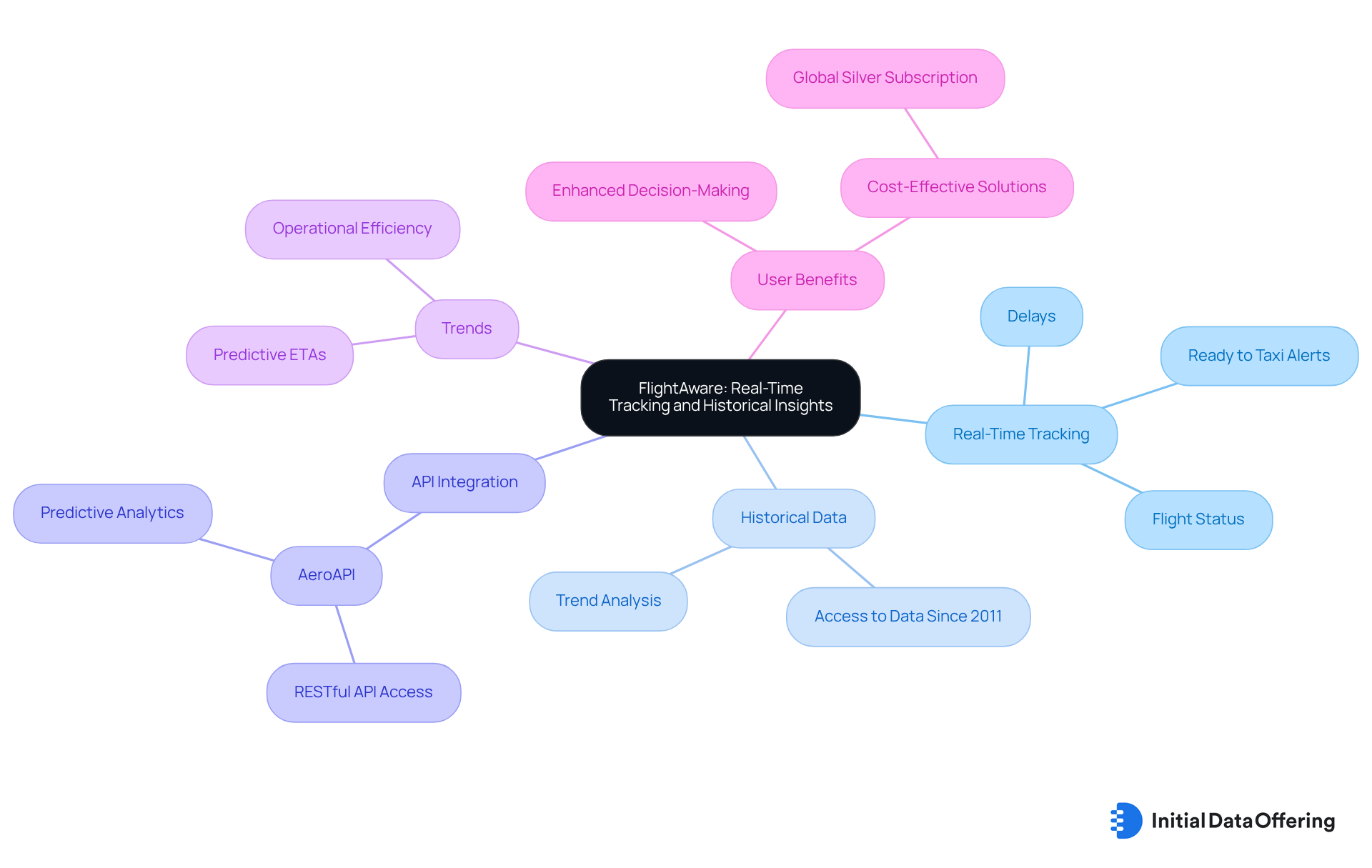
OpenSky Network: Open Access to Air Traffic Historical Data
The OpenSky Network provides free historical flight data, offering open access to a comprehensive array of past air traffic information, including ADS-B and Mode-S details. This initiative features specific collections such as the Weekly 24 Hours of State Vector Records and the COVID-19 Flight Collection. By providing these datasets, OpenSky supports researchers and developers in analyzing air traffic patterns and trends, which is crucial for enhancing aviation safety and efficiency.
Utilizing OpenSky's datasets allows users to conduct in-depth studies on air traffic behavior. The OpenSky API and available tools, such as Python, R, and MATLAB libraries, facilitate effective information analysis. This capability enables researchers to leverage extensive datasets for informed decision-making. How might your research benefit from these resources?
Furthermore, the community aspect of the OpenSky Network encourages participation, allowing individuals to engage in collaborative research opportunities that deepen the understanding of air traffic dynamics. Insights obtained from nearly 50 billion ADS-B messages have led to significant advancements in safety and operational efficiencies. This underscores the essential role of free historical flight data in air traffic management, highlighting the potential for future improvements. What insights could you uncover by exploring these datasets?
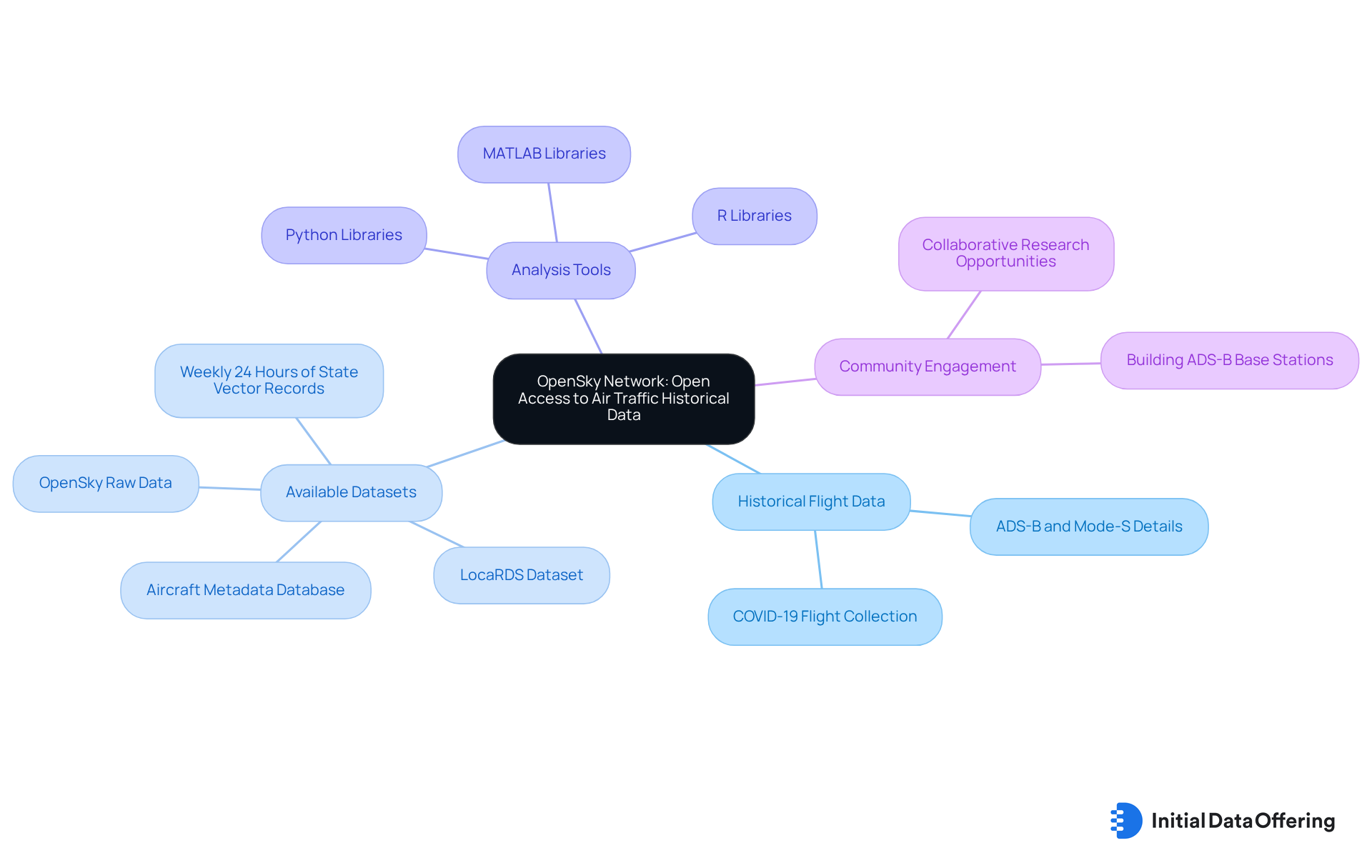
Turbli: Turbulence Forecasts and Historical Delay Data
Turbli provides users with free historical flight data along with a comprehensive collection of historical delay information and turbulence predictions, enabling them to grasp the intricate relationship between weather conditions and air travel operations. This information is crucial for airlines, as it allows them to enhance their scheduling and safety measures, ultimately improving passenger security and comfort.
Insights from aviation safety specialists underscore the vital role that weather plays in flight operations, with many experts emphasizing that timely access to accurate information can significantly reduce risks associated with turbulence. For example, Scott Gilmore, a former commercial and military aviator, asserts, "We can’t stop turbulence from happening. But we can prevent most injuries. That starts with getting the right information to the right people at the right time."
Airlines are increasingly leveraging free historical flight data to implement safety improvements, ensuring they are better equipped to handle adverse weather conditions. This proactive strategy not only mitigates risks but also enhances the overall travel experience for passengers.
Moreover, understanding various types of turbulence, such as Clear Air Turbulence and Wind Shear Turbulence, is essential for airlines to effectively navigate the challenges posed by evolving weather patterns.
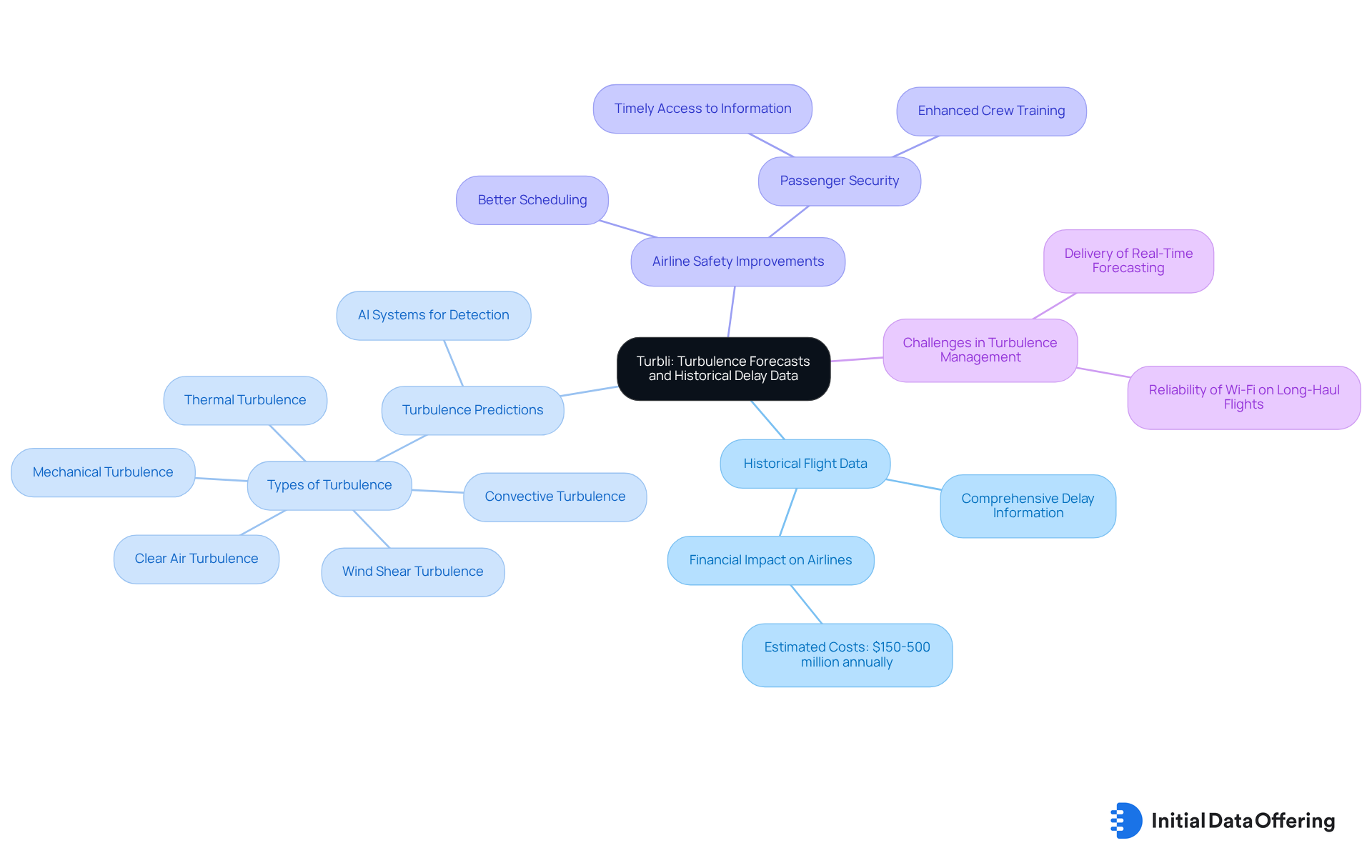
NOAA: Historical Weather Data for Aviation Analysis
The National Oceanic and Atmospheric Administration (NOAA) provides extensive free historical flight data that is essential for aviation analysis. This dataset, which includes free historical flight data, allows users to assess how weather conditions have impacted flight operations over time, highlighting its relevance in the aviation sector.
By leveraging this information, airlines and researchers can enhance safety protocols and improve operational efficiency in response to evolving weather patterns. For example, with NOAA managing 92 launch locations, the breadth of available data enables airlines to identify trends that influence safety and efficiency.
Meteorologists stress the importance of weather in aviation; as Tom Di Liberto articulates, 'The concern is…what is it going to replace?' This underscores the critical need for reliable weather information to facilitate informed decision-making.
As we advance through 2025, the ability to access and analyze free historical flight data will become increasingly vital for airlines seeking to refine their operational strategies in light of changing climatic conditions.
How can this information shape your approach to aviation safety and efficiency?
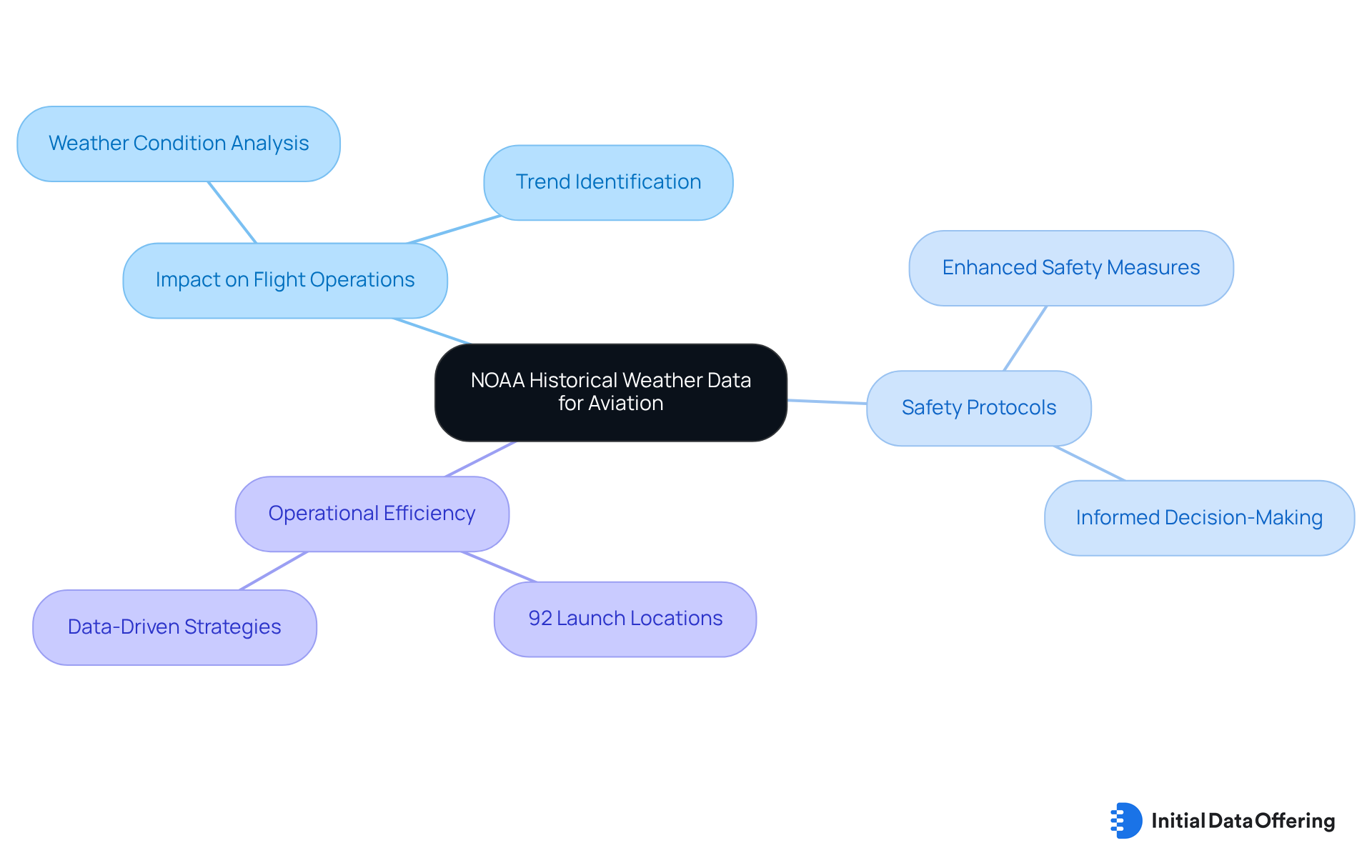
Bureau of Transportation Statistics: Historical Flight Performance Data
The Bureau of Transportation Statistics (BTS) serves as a comprehensive repository of free historical flight data, featuring crucial on-time performance metrics and passenger counts. This free historical flight data is invaluable for airlines, researchers, and policymakers who aim to analyze air travel patterns and enhance service quality. For example, in the first half of 2025, U.S. air travel recorded 152.7 million passenger trips, indicating a 2% increase year-over-year, despite a minor decline in total sales. By leveraging free historical flight data, stakeholders can uncover patterns and make informed decisions that promote operational efficiency and elevate customer satisfaction.
Furthermore, the recent release of Airline Service Quality Performance data for January 2025 by the U.S. Department of Transportation (DOT) provides insights into on-time performance and service metrics. This allows researchers to explore trends and propose improvements in airline operations. Analysts have noted that the rise in passenger numbers, combined with evolving service quality metrics, underscores the importance of utilizing such data to adapt to changing consumer expectations and enhance overall travel experiences.
How can your organization use this information to improve its services and meet customer demands effectively?
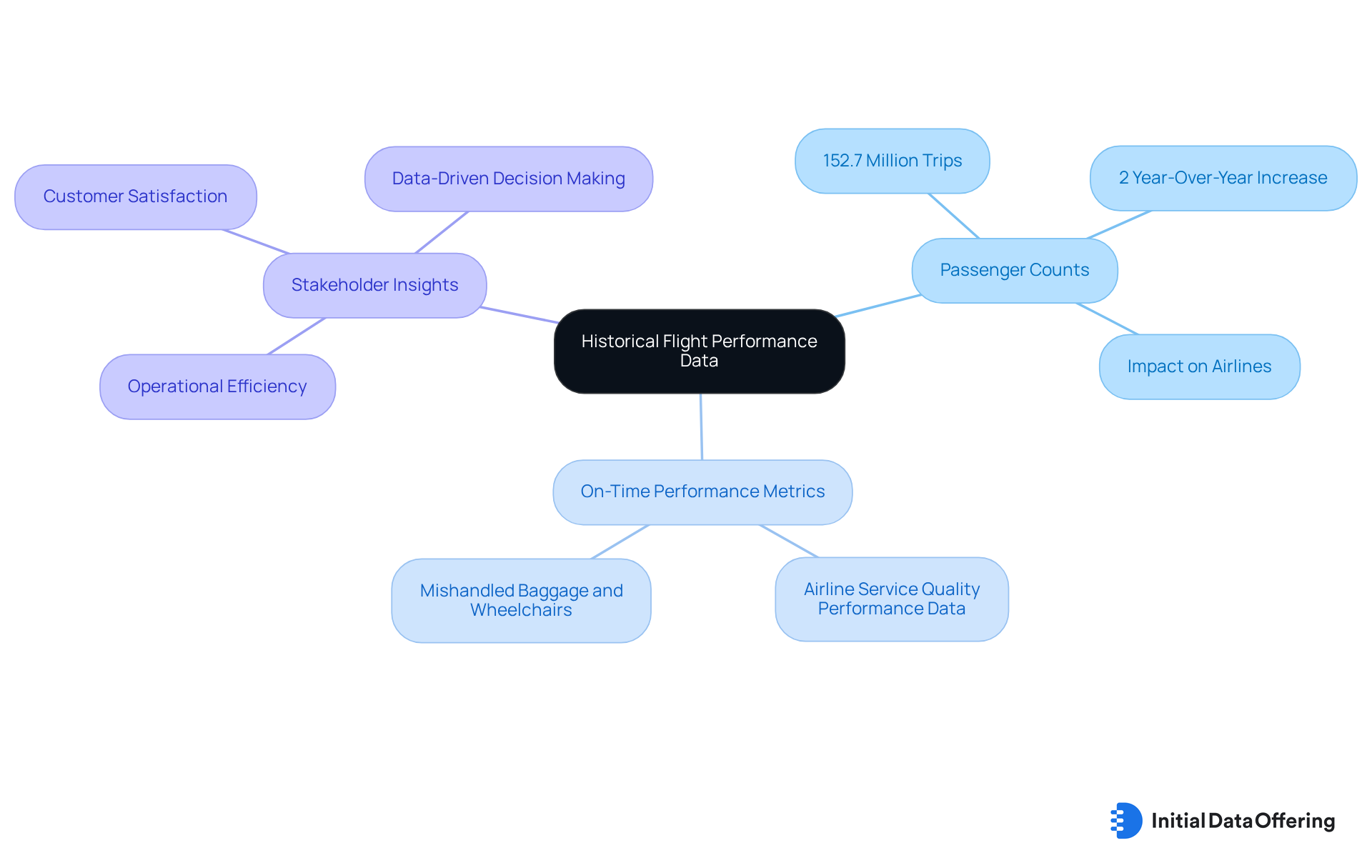
Airline Reporting Corporation: Historical Ticketing and Flight Data
The Airline Reporting Corporation (ARC) provides extensive free historical flight data along with ticketing information, which is crucial for understanding trends in air transportation sales and passenger behavior. In the first half of 2025, U.S.-based agency air ticket sales reached $52.3 billion, marking a slight 1% decrease compared to the same period in 2024. Despite this, total passenger trips rose by 2%, indicating a robust demand for air travel. This data, specifically free historical flight data, is essential for airlines and tourism agencies aiming to enhance their services and grasp market dynamics.
By analyzing free historical flight data, stakeholders can identify opportunities for growth and strengthen their competitive positioning in the aviation sector. For instance, the increase in domestic journeys, totaling 95.1 million in early 2025, underscores a rising preference for local excursions. Furthermore, the average air ticket price in June 2025 was $536, reflecting a 1% increase from the previous year, which offers additional insights into pricing trends. The growth in online booking agency transactions, which surged by 7% year over year in June 2025, highlights the critical role of digital platforms in shaping consumer behavior.
Travel agencies are increasingly leveraging ARC's insights to refine their services. The establishment of new partnerships, such as those between ARC and airlines like Philippine Airlines and Royal Jordanian Airlines, illustrates how agencies are optimizing their offerings to enhance service delivery and address evolving traveler needs. As the travel landscape continues to transform, the insights derived from ARC's comprehensive data, particularly free historical flight data, will remain vital in guiding strategic decisions and improving customer experiences.
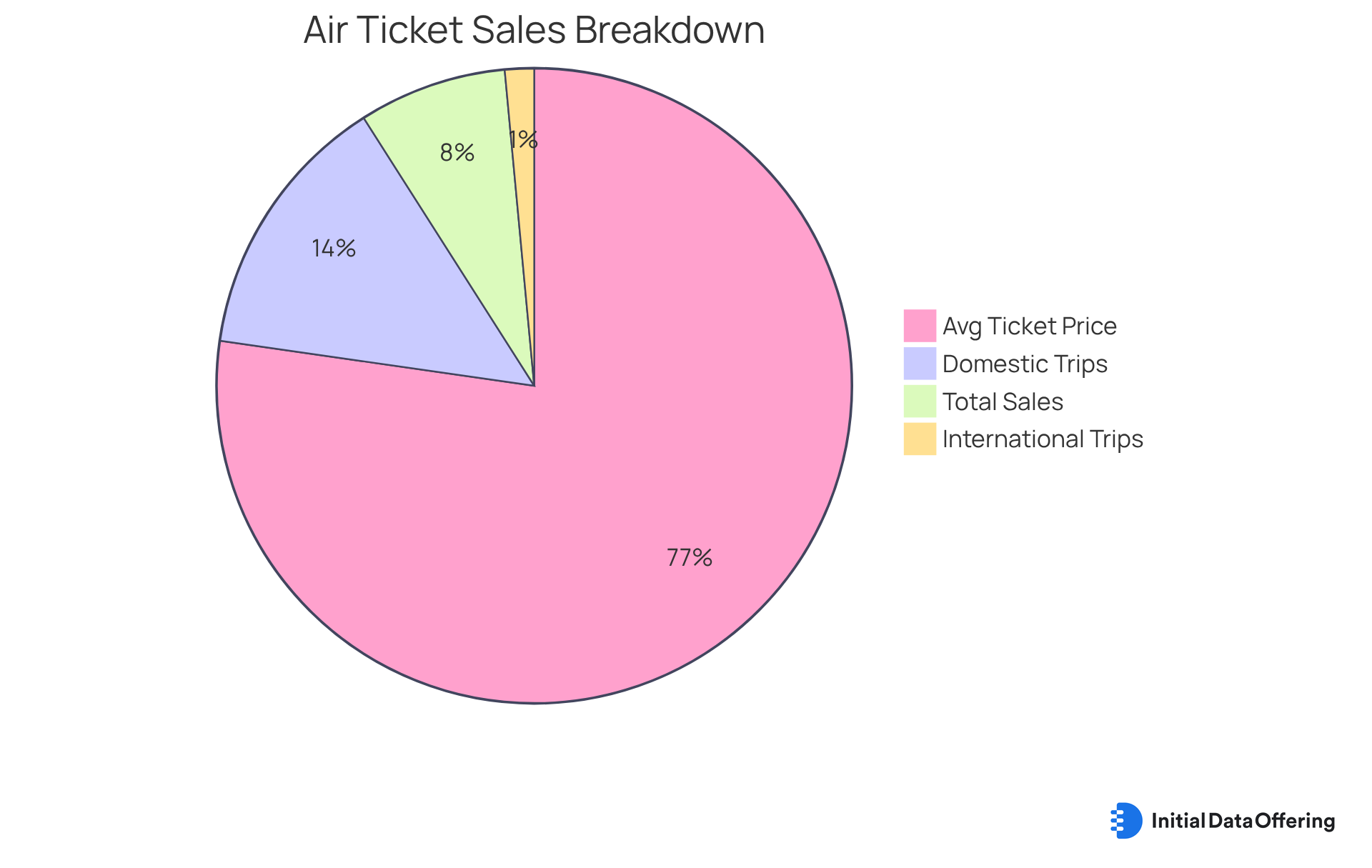
Data.gov: A Repository for Historical Aviation Datasets
Data.gov serves as a comprehensive repository of historical aviation datasets, encompassing features such as flight performance metrics, safety records, and operational statistics. These datasets are invaluable for researchers and analysts who seek to access government-collected data for their studies. By utilizing Data.gov, users not only gain insights into aviation trends but also contribute to informed policy decisions that enhance safety and efficiency within the industry.
How might your research benefit from this wealth of data? Engaging with these datasets can lead to a deeper understanding of the aviation landscape, ultimately fostering advancements that improve operational practices.
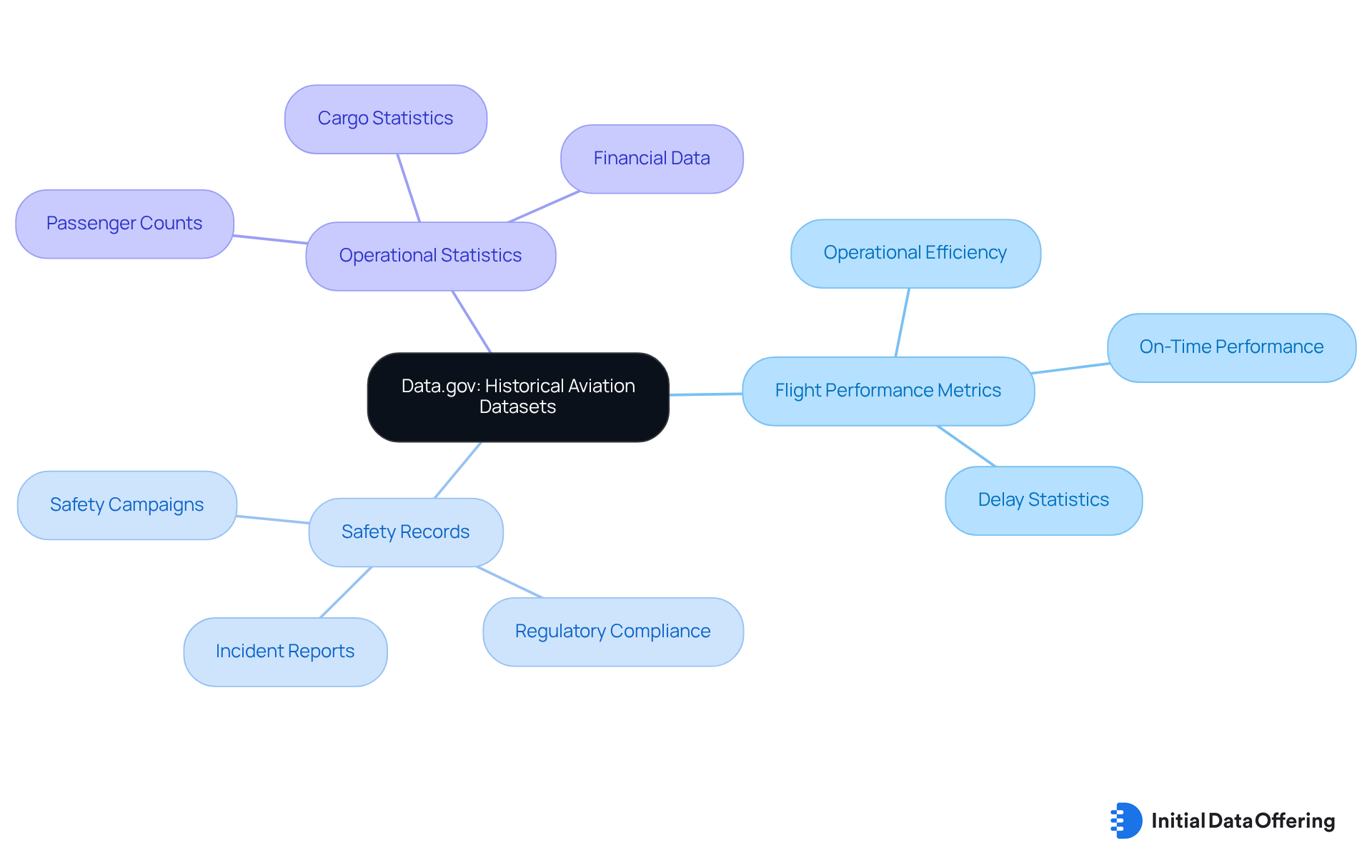
Conclusion
The landscape of aviation is evolving, and access to free historical flight data has become a pivotal resource for industry stakeholders. By tapping into diverse datasets from platforms like the Initial Data Offering, ExpertFlyer, OAG, and others, users can gain valuable insights that drive strategic decisions, enhance operational efficiency, and improve customer experiences. This wealth of information not only supports researchers and analysts but also empowers airlines and travel agencies to adapt to changing market dynamics.
Throughout this article, key sources of free historical flight data have been highlighted, showcasing their unique offerings and the benefits they provide. For instance, the real-time tracking capabilities of FlightAware allow users to monitor flights as they happen, while the comprehensive datasets available through Data.gov provide extensive historical information. Each platform contributes to a deeper understanding of air travel patterns, safety, and operational metrics. The emphasis on utilizing these datasets underscores their importance in fostering innovation and enhancing overall efficiency in the aviation sector.
As the industry continues to embrace data-driven insights, the call to action is clear: engage with these resources to unlock new opportunities and inform strategic initiatives. How can these datasets inform your research or operational planning? Whether for enhancing the travel experience or navigating complex market dynamics, leveraging free historical flight data is essential. The potential for improved safety, efficiency, and customer satisfaction lies in the hands of those who choose to explore and utilize these invaluable datasets.
Frequently Asked Questions
What is the Initial Data Offering (IDO)?
The Initial Data Offering (IDO) is a centralized hub that provides a wide range of free historical flight data, including schedules and performance metrics, enhancing accessibility for businesses, researchers, and aviation enthusiasts.
How does the IDO benefit users?
The IDO allows users to analyze trends in air travel and operational efficiency over time, informing strategic decisions and optimizing operations through access to vast datasets.
How many archival aviation datasets were available as of 2025?
As of 2025, the volume of archival aviation datasets available across various platforms has exceeded 1 million.
What role does historical aviation data play in decision-making?
Historical aviation data is critical for strategic decision-making, as it provides insights that can enhance operational efficiency and foster innovation within the aviation sector.
What tools does ExpertFlyer provide for frequent travelers?
ExpertFlyer offers tools to track travel history, manage award seat availability, and identify favorable routes for upgrades, helping travelers maximize their travel benefits.
Why is historical data important for managing travel upgrades?
Historical data allows travelers to examine trends in transportation availability and performance, enabling them to refine their strategies for obtaining upgrades effectively.
What market position does ExpertFlyer hold as of 2025?
As of 2025, ExpertFlyer commands a substantial market share within the travel management tools sector, indicating its value to frequent travelers.
What concerns have been raised about ExpertFlyer?
Recent issues with award availability and seat map functionality have raised concerns regarding the platform's reliability.
How can businesses leverage data from OAG?
Businesses can use OAG's extensive historical flight data to gain insights into market dynamics, optimize operational strategies, evaluate performance metrics, and adapt to consumer preferences.
Since when has OAG provided access to historical flight data?
OAG has provided access to free historical flight data, including past flight schedules and status information, since 2004.